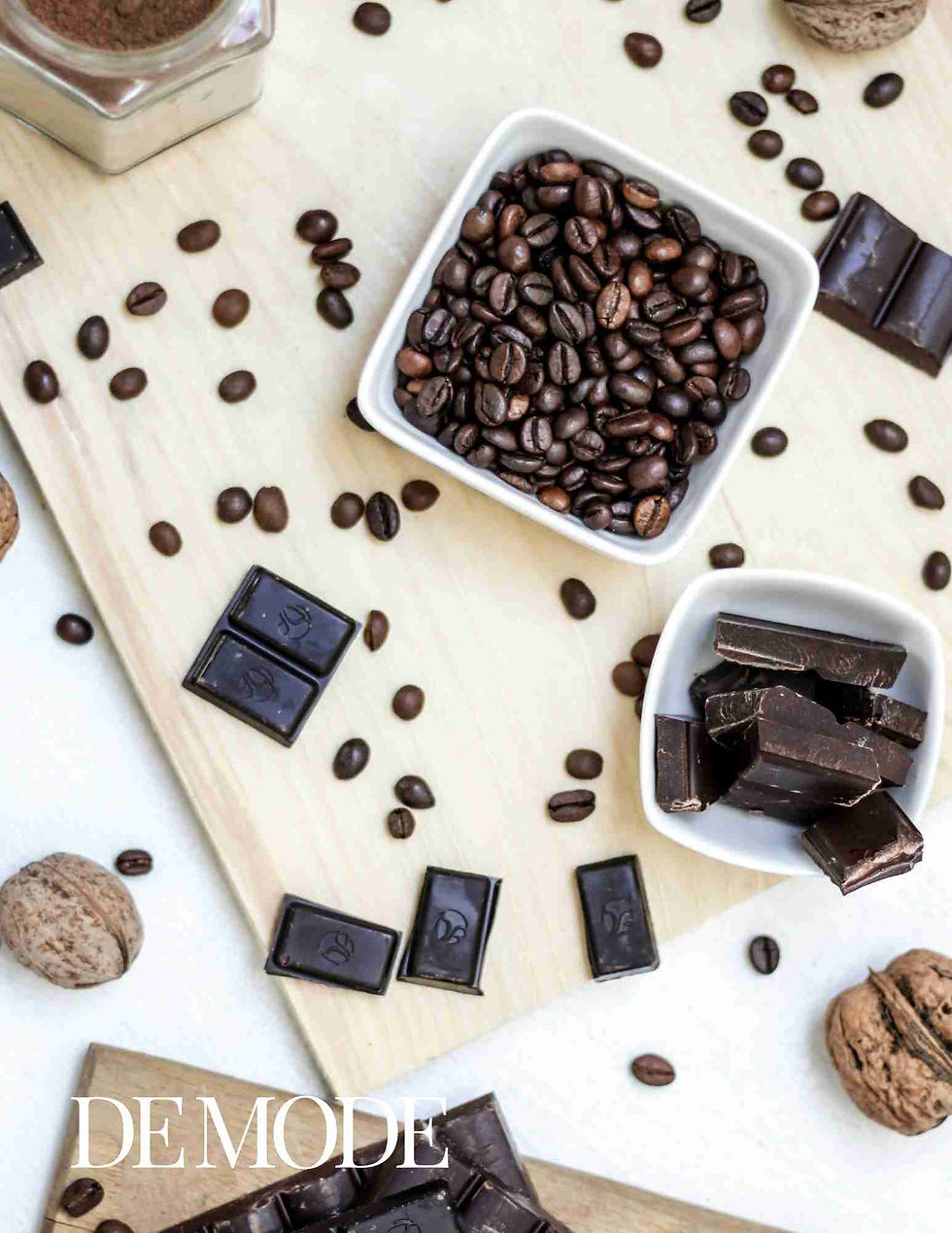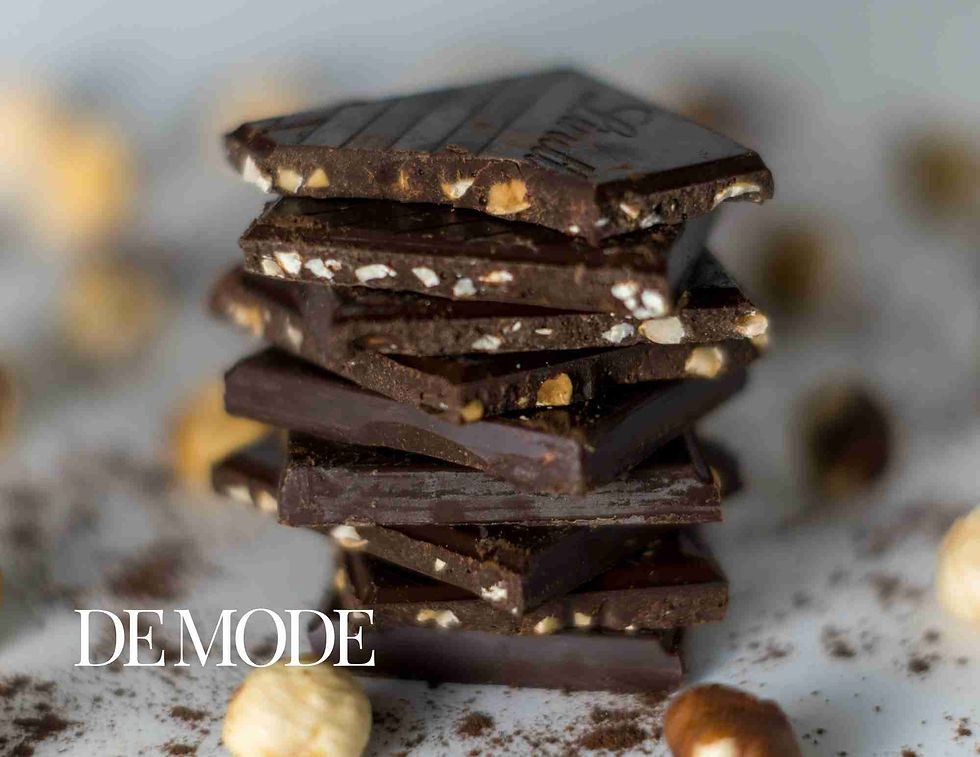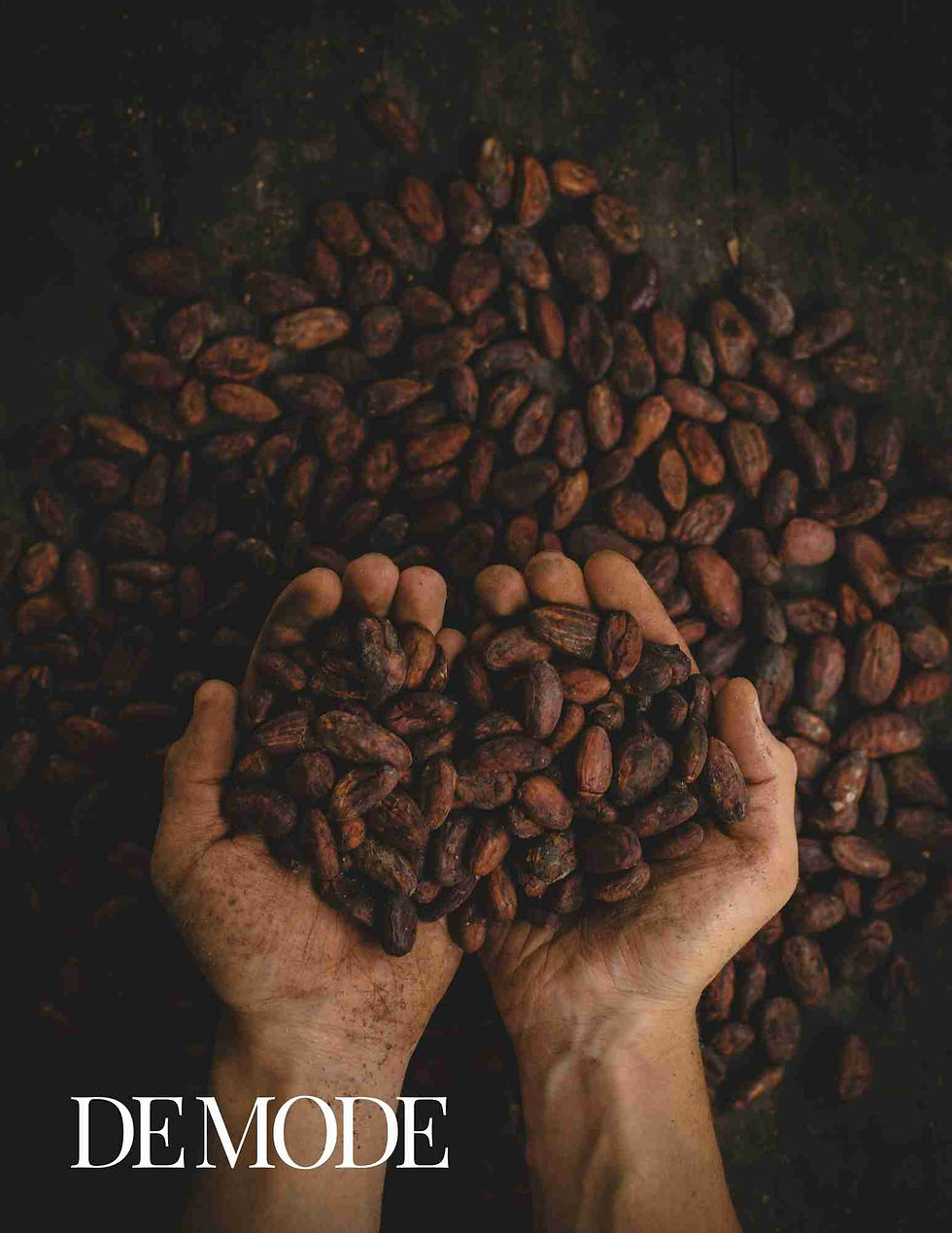ORIGINALLY PUBLISHED IN DE MODE | FOOD
Article Published on: 06TH OCT 2024 | www.demodemagazine.com
Chocolate is one of the world’s most beloved indulgences, enjoyed in countless forms by people of all ages and cultures. However, while most of us are familiar with the end product, few know the intricate process that transforms the humble cocoa bean into the delicious bars and confections that we crave. The art of chocolate making is a complex journey that involves science, craftsmanship, and a deep appreciation for the natural ingredients. This guide takes you through the entire chocolate-making process, from bean to bar, revealing the nuances that make each bite of chocolate so irresistible.
1. The Origins of Chocolate – A Brief History
Before diving into the technical details of chocolate making, it's essential to understand the rich history behind this coveted treat. Chocolate's origins can be traced back to the ancient civilizations of Mesoamerica, where the Olmecs, Mayans, and Aztecs revered the cocoa bean. They consumed it in a drink form, often mixed with spices and other ingredients. Cocoa beans were so valuable that they were even used as currency.
When Spanish explorers brought cocoa back to Europe in the 16th century, chocolate became a luxurious drink for the elite, and eventually, as techniques improved, solid chocolate was developed. Today, the chocolate-making process has evolved into a refined art, and artisan chocolatiers around the world are perfecting the craft of turning raw beans into exquisite bars.

2. Step 1: Harvesting Cocoa Beans
The journey from bean to bar begins in the tropical regions where cocoa trees thrive, such as West Africa, South America, and Southeast Asia. Theobroma cacao, the scientific name for the cocoa tree, translates to "food of the gods," which speaks to the importance of cocoa throughout history.
Cocoa pods grow directly from the trunk of the tree, and each pod contains 20 to 50 seeds, or beans, encased in a sweet, sticky pulp. These pods are harvested by hand, typically using machetes, to ensure that the tree is not damaged. The timing of the harvest is crucial, as the pods must be picked when fully ripened for optimal flavor.
3. Step 2: Fermentation
After harvesting, the beans are extracted from the pods and undergo fermentation, a critical step in developing the complex flavors of chocolate. The beans, along with the surrounding pulp, are placed in shallow wooden boxes or baskets and covered with banana leaves. Over the course of several days (usually 5 to 7), the pulp ferments, generating heat and triggering a series of chemical reactions inside the beans.
Fermentation is essential for reducing the bitterness of the beans and enhancing the chocolate’s natural flavors. This process develops the characteristic fruity, nutty, and floral notes that are later refined during roasting.
4. Step 3: Drying the Beans
Once fermentation is complete, the cocoa beans must be dried to reduce their moisture content and prevent mold growth during storage. The beans are spread out in the sun on large drying racks or patios, where they are raked and turned regularly to ensure even drying. This process can take up to a week, depending on the weather conditions.
Proper drying is essential for maintaining the quality of the beans. Too much moisture can lead to spoilage, while over-drying can affect the flavor profile. Once the beans are dried, they are bagged and shipped to chocolate manufacturers or artisan chocolatiers around the world.
5. Step 4: Roasting
Upon arrival at the chocolate factory or workshop, the dried cocoa beans are roasted, a step that brings out the full potential of their flavor. Roasting is a delicate process that requires precise temperature control and timing. Each batch of beans may require a different roasting profile, depending on the origin, size, and desired flavor characteristics.
During roasting, the beans undergo the Maillard reaction, a chemical process that enhances their complexity and develops the rich, chocolatey notes we associate with cocoa. The temperature and duration of roasting can vary, with lower temperatures preserving more fruity and floral notes, while higher temperatures emphasize deeper, more robust flavors.

6. Step 5: Cracking and Winnowing
After roasting, the beans are cracked open to separate the outer shell from the inner nib. This process, known as winnowing, removes the inedible husk and leaves behind the cocoa nibs, which are the pure essence of the cocoa bean. Cocoa nibs are rich in cocoa solids and cocoa butter, the two main components of chocolate.
The husks are often discarded, but some chocolatiers repurpose them for other uses, such as brewing cocoa tea or composting.
7. Step 6: Grinding and Conching
The next step in chocolate making is grinding the cocoa nibs into a smooth, liquid mass called cocoa liquor (despite the name, it contains no alcohol). The grinding process breaks down the nibs into tiny particles, releasing the cocoa butter and creating a thick, rich paste.
Once the cocoa liquor is formed, it is refined further in a process called conching. During conching, the chocolate is continuously mixed and aerated for several hours, and sometimes even days, depending on the desired texture and flavor. Conching helps to smooth the chocolate by breaking down the particles to a fine consistency and mellowing any harsh or bitter notes.
At this stage, sugar, milk powder (for milk chocolate), and additional cocoa butter may be added to the mixture to achieve the desired sweetness, creaminess, and mouthfeel.
8. Step 7: Tempering
Tempering is one of the most crucial steps in the chocolate-making process. This involves heating, cooling, and reheating the chocolate to specific temperatures to stabilize the cocoa butter crystals. Proper tempering gives chocolate its glossy finish, smooth texture, and satisfying snap when broken.
Without tempering, chocolate can appear dull and have a grainy texture. Chocolatiers must be skilled in this technique, as slight temperature variations can lead to undesirable results.
9. Step 8: Molding and Cooling
Once the chocolate is tempered, it is ready to be molded into bars or shaped into various confections. The liquid chocolate is poured into molds and then cooled, allowing it to solidify. During this cooling process, the cocoa butter sets, giving the chocolate its final form and texture.
Many artisan chocolatiers add unique touches at this stage, such as incorporating nuts, dried fruits, or spices into the chocolate. Some may also use intricate molds to create beautifully designed bars and bonbons.
10. Step 9: Packaging and Storing
After the chocolate has cooled and solidified, it is removed from the molds and carefully packaged. Proper packaging is essential to preserve the quality and flavor of the chocolate. High-quality chocolates are often wrapped in foil to protect them from air and light, which can degrade the flavor over time.
Chocolate should be stored in a cool, dry place away from strong odors, as it can easily absorb surrounding smells. Ideally, chocolate is stored at temperatures between 60°F and 70°F (15°C to 21°C) to prevent it from melting or blooming (a process where cocoa butter rises to the surface, creating a whitish film).

Conclusion
The art of chocolate making, from bean to bar, is a labor-intensive process that requires skill, patience, and a deep understanding of the cocoa bean’s natural properties. From the careful harvesting and fermentation of cocoa beans to the precision of roasting, grinding, and tempering, each step contributes to the creation of the final product. Artisan chocolatiers and large-scale manufacturers alike are dedicated to perfecting this craft, ensuring that the chocolate we enjoy is not only delicious but also a testament to the art and science behind its creation.
For those who appreciate fine chocolate, understanding the journey from bean to bar deepens the enjoyment of each bite, transforming a simple indulgence into an experience rich with history, craftsmanship, and flavor.